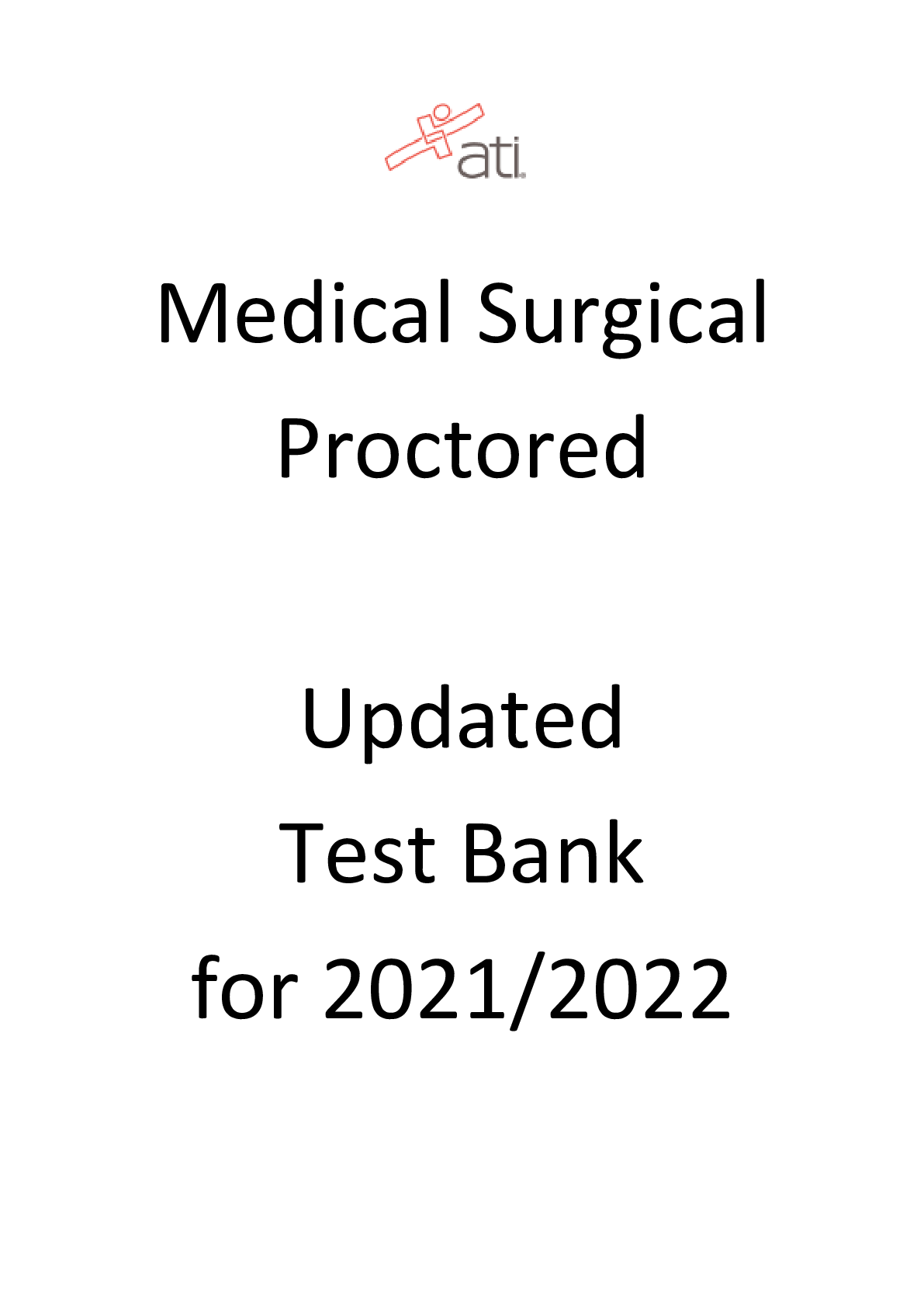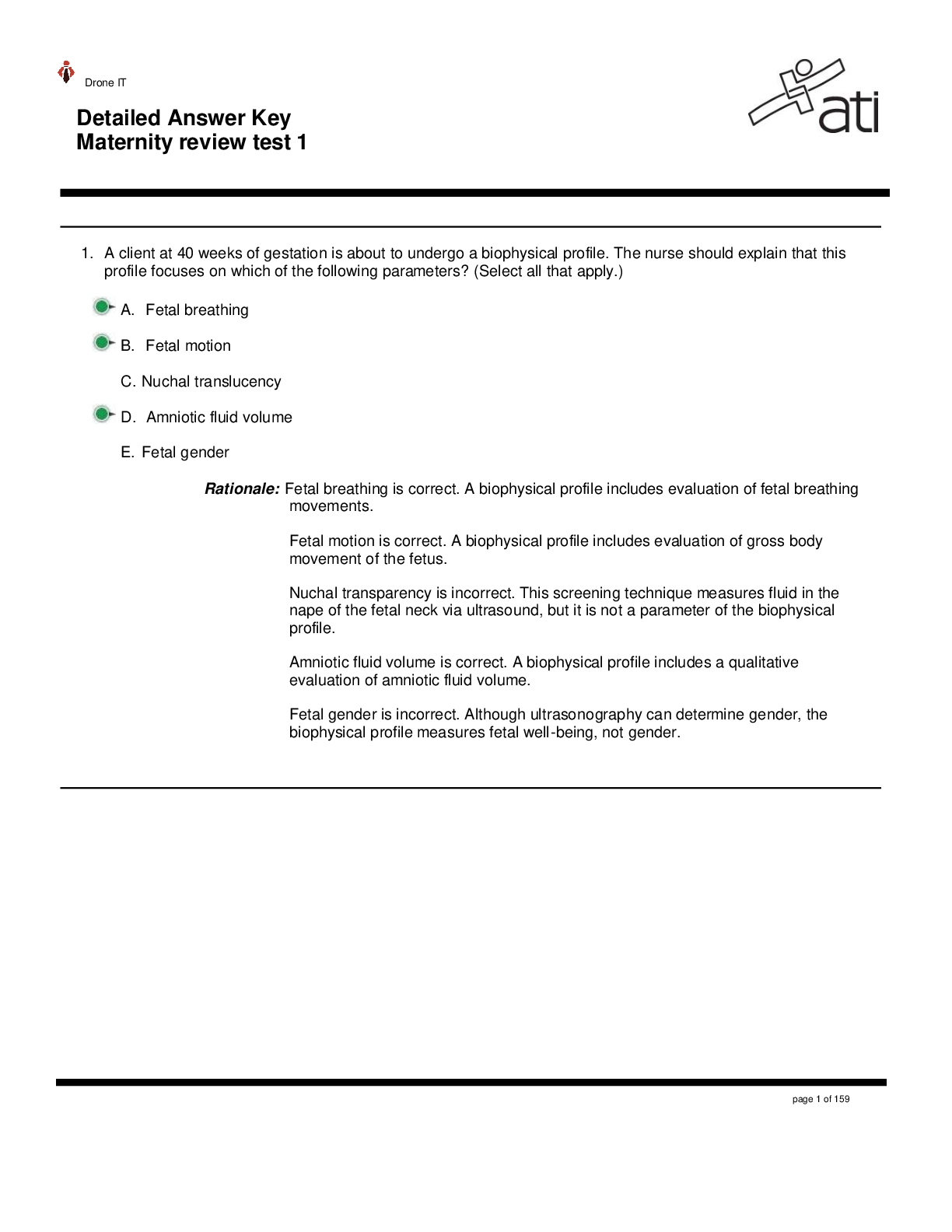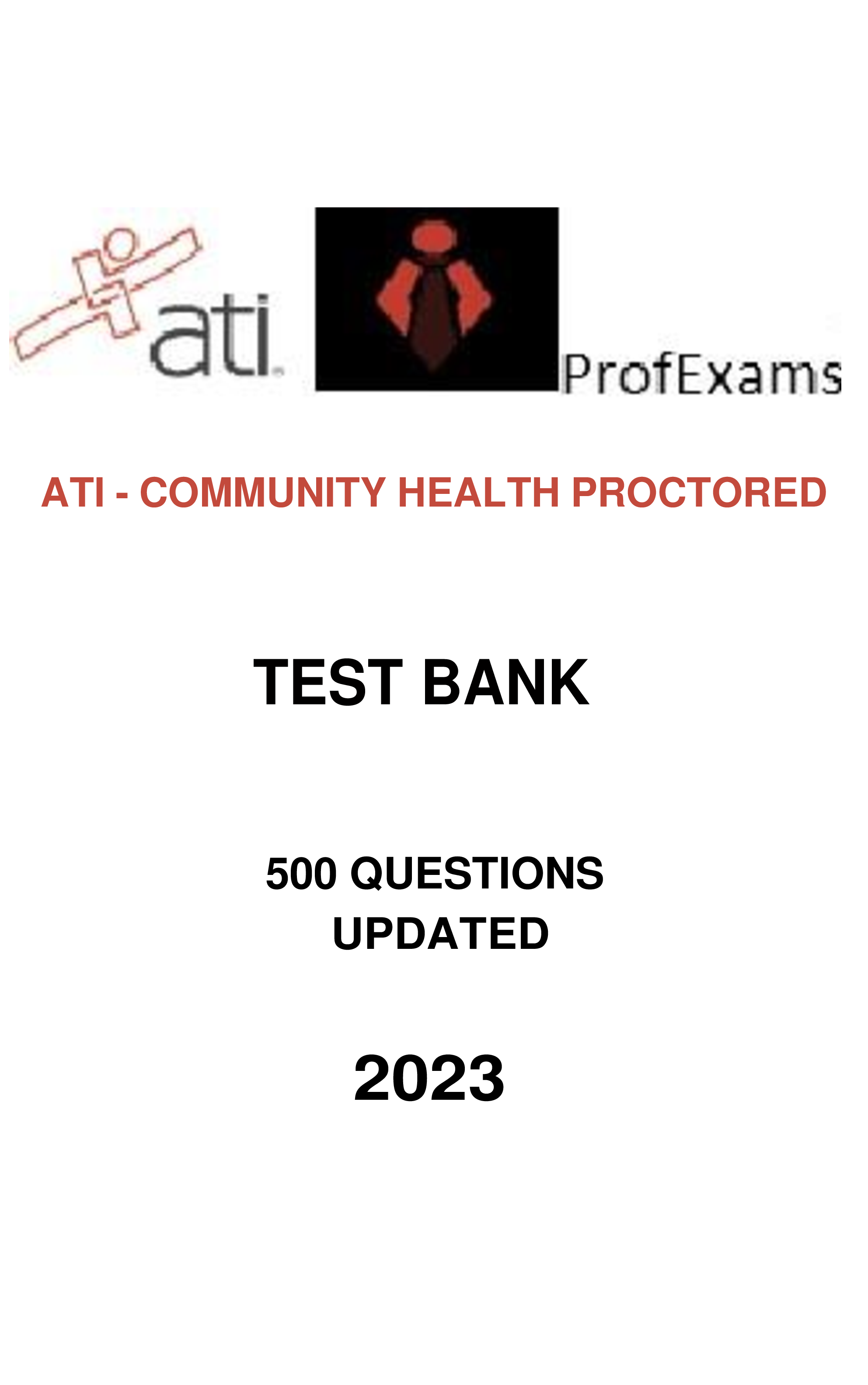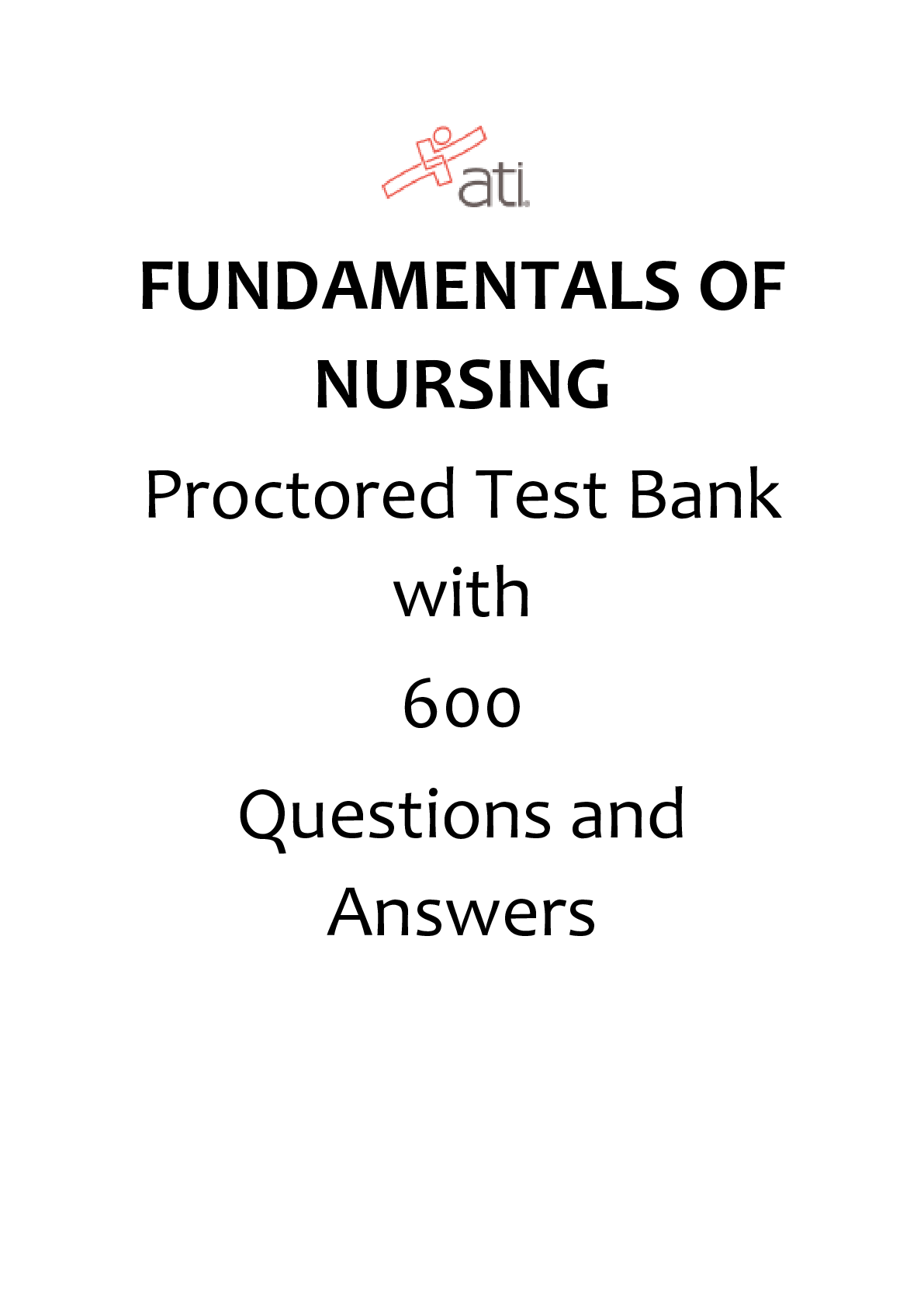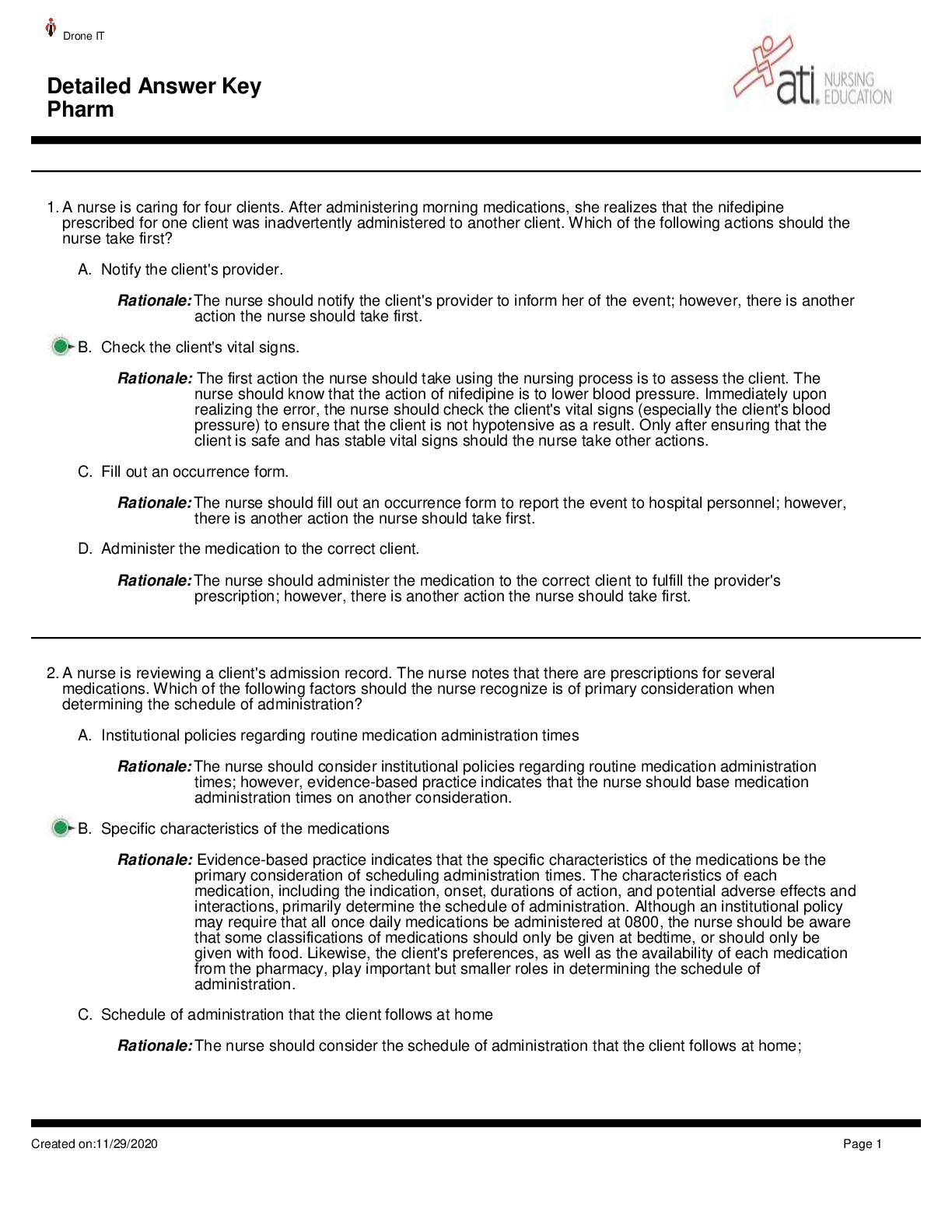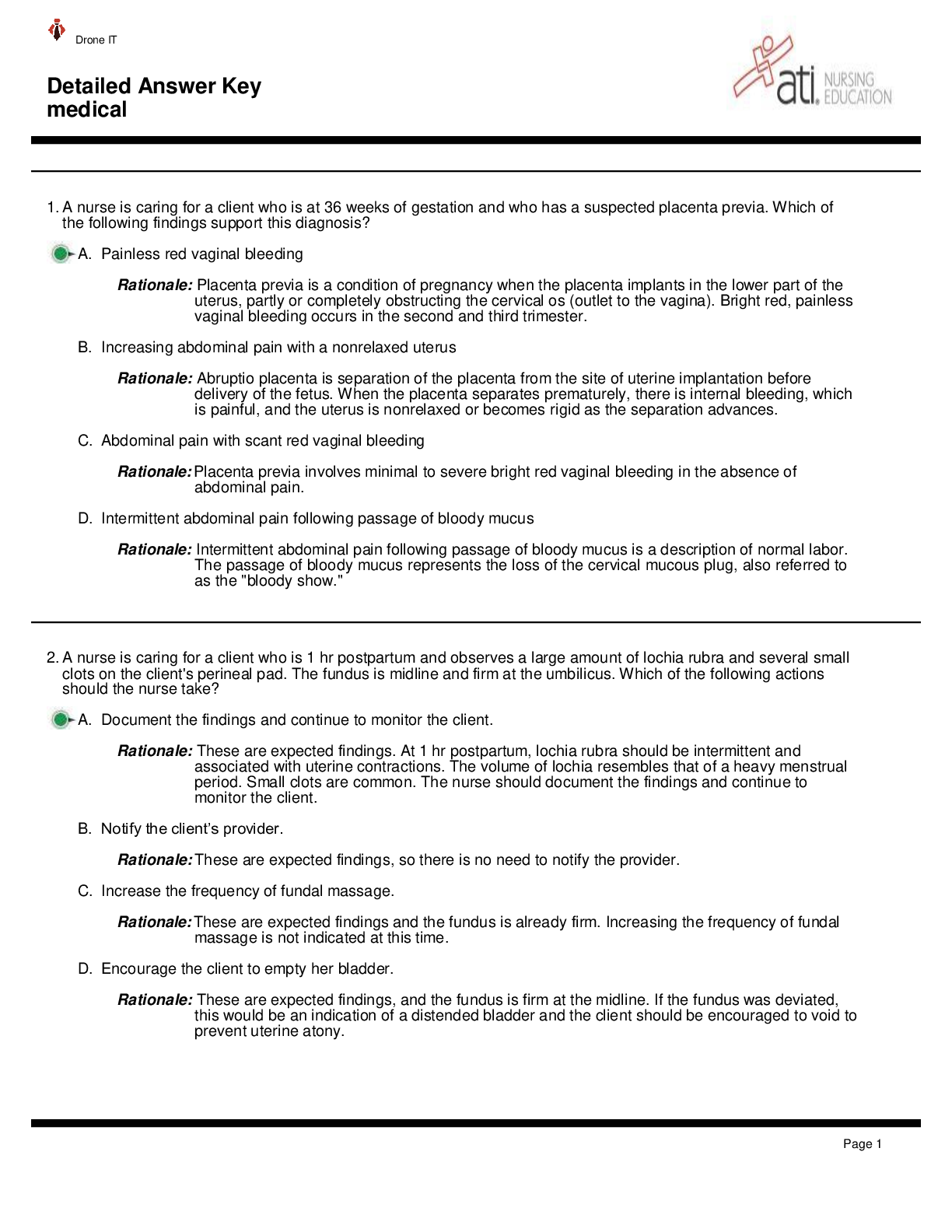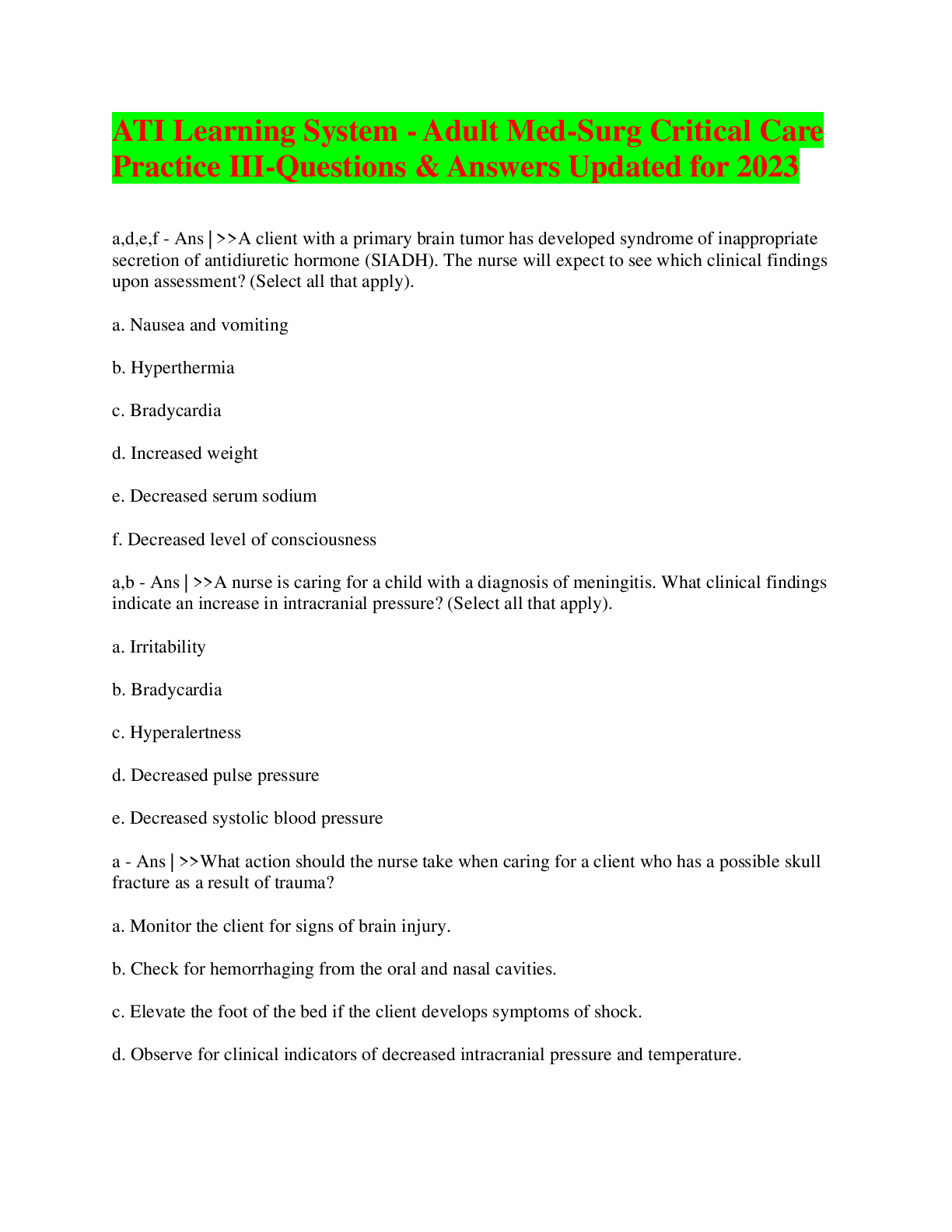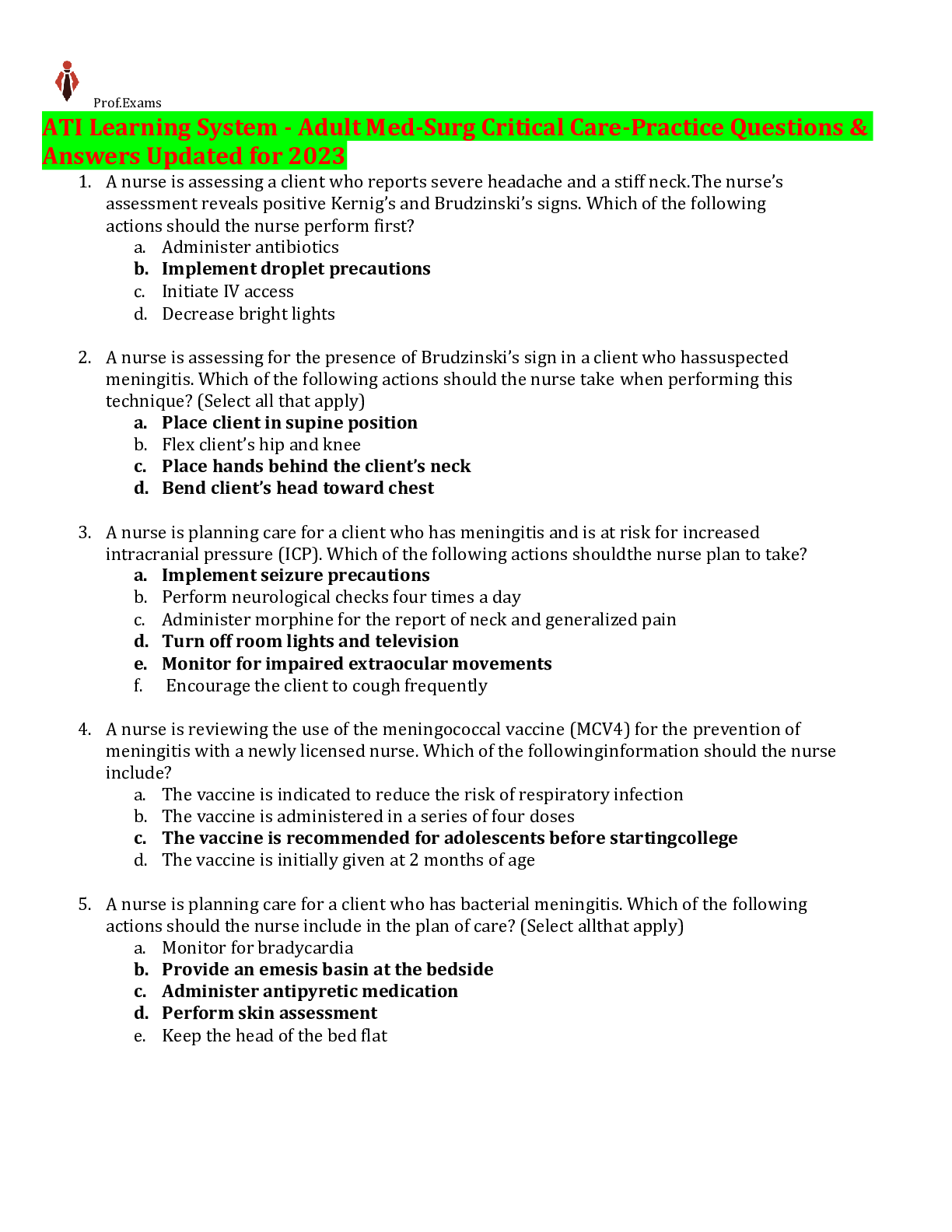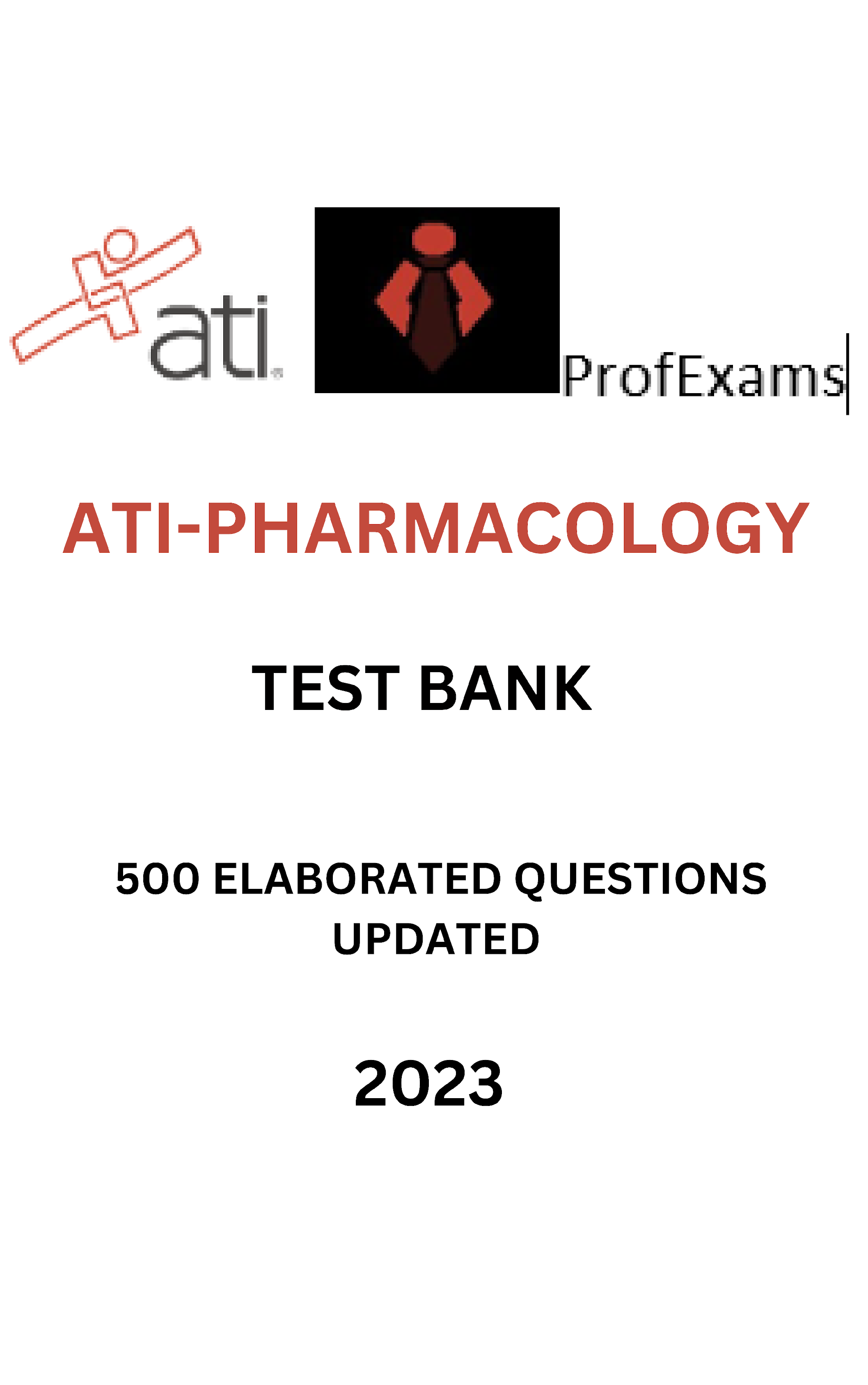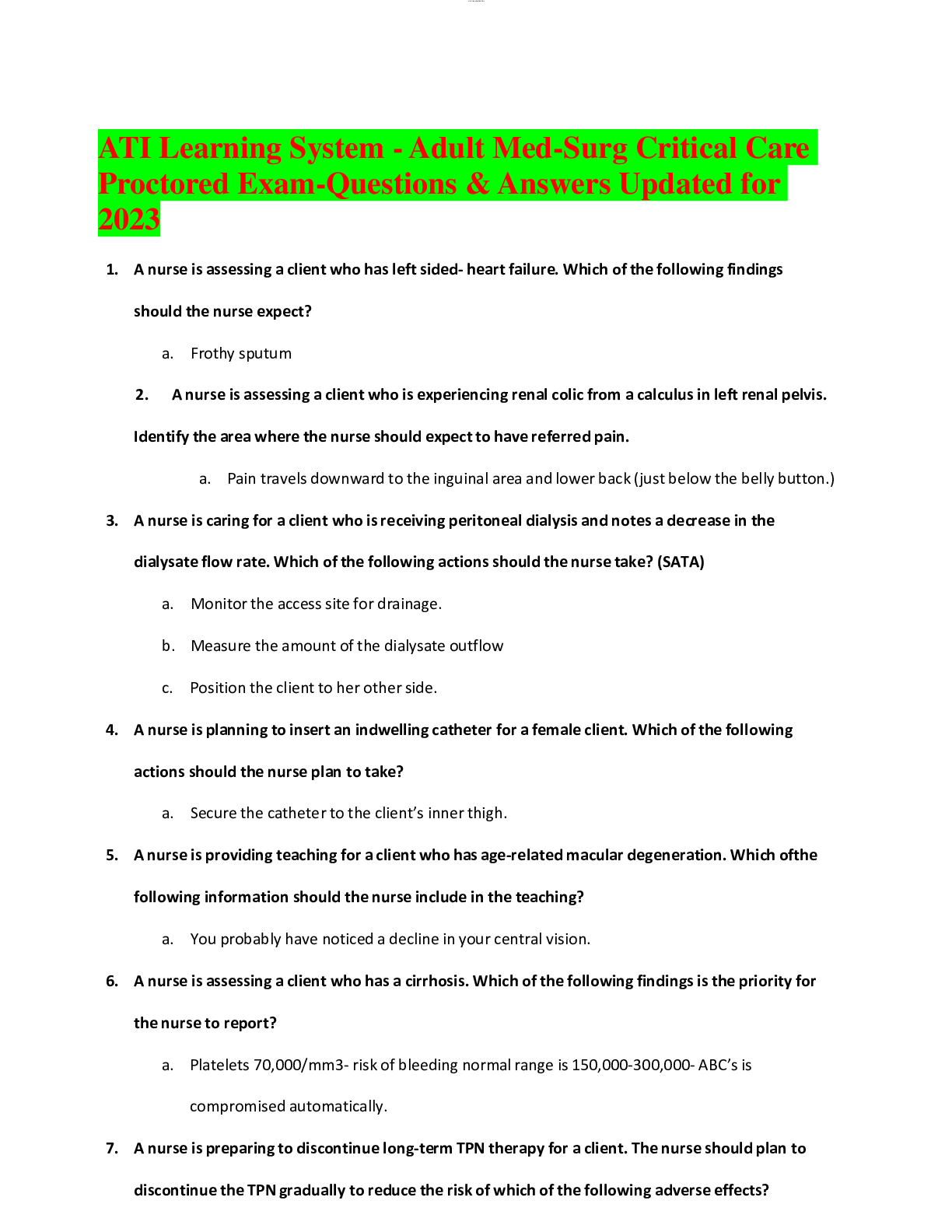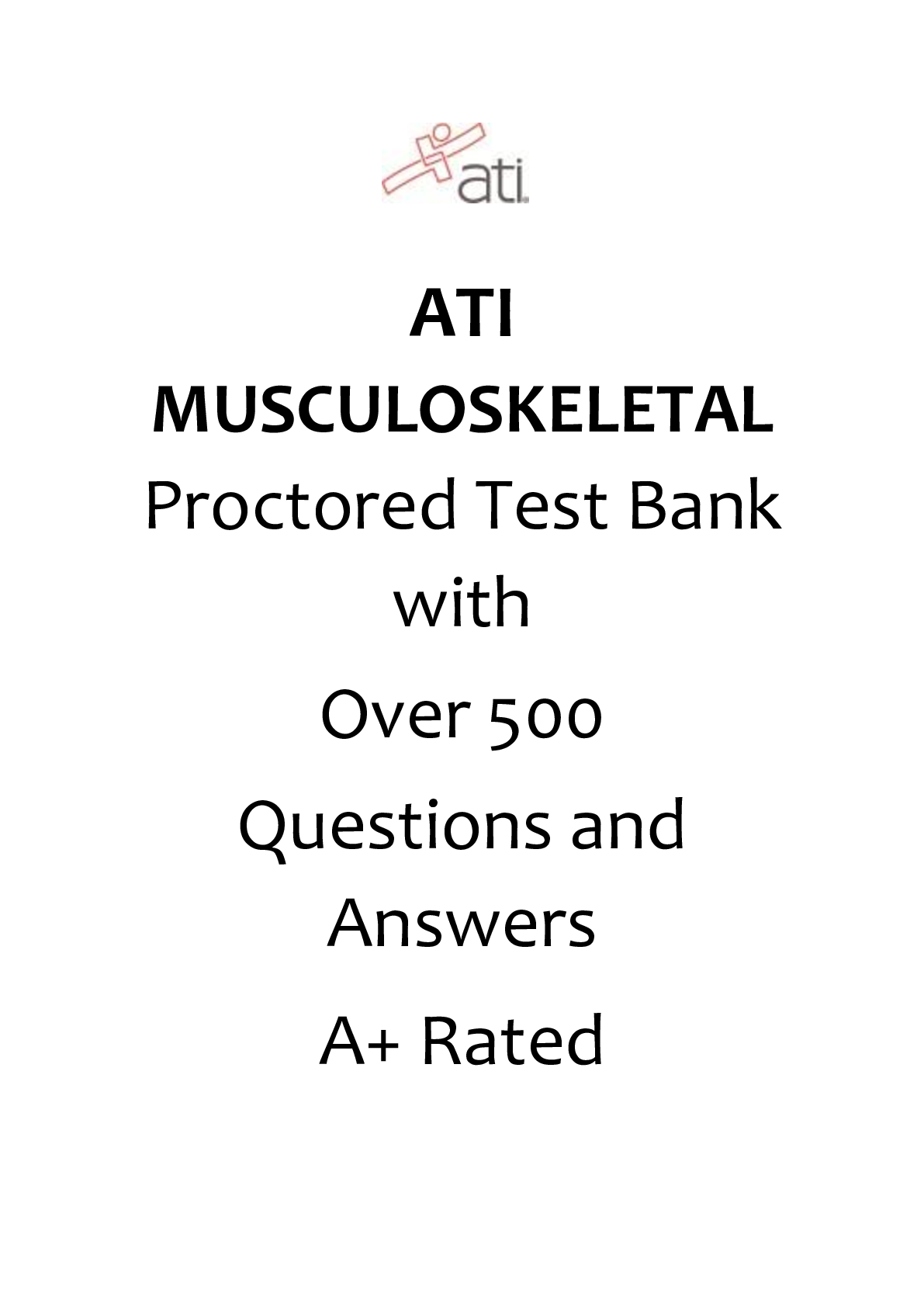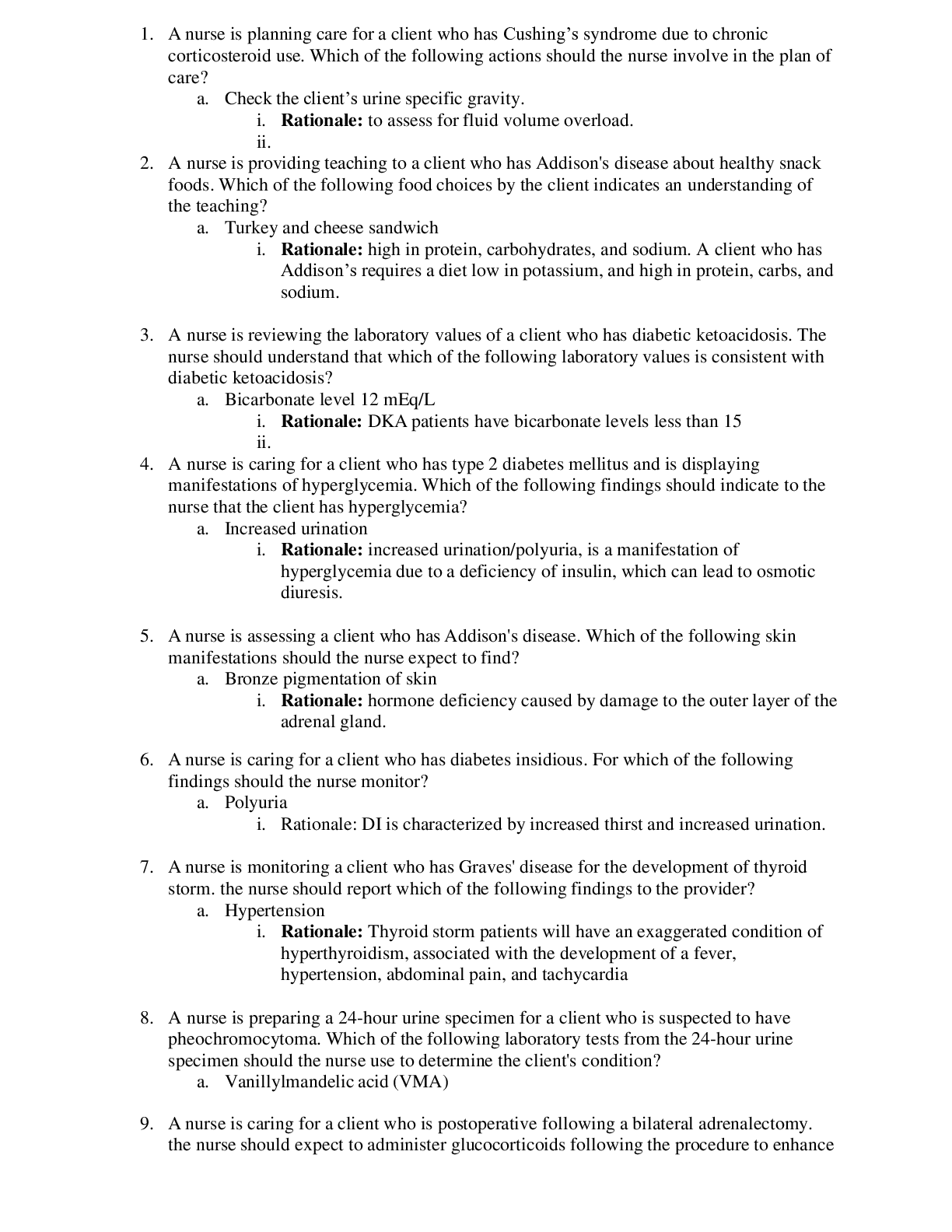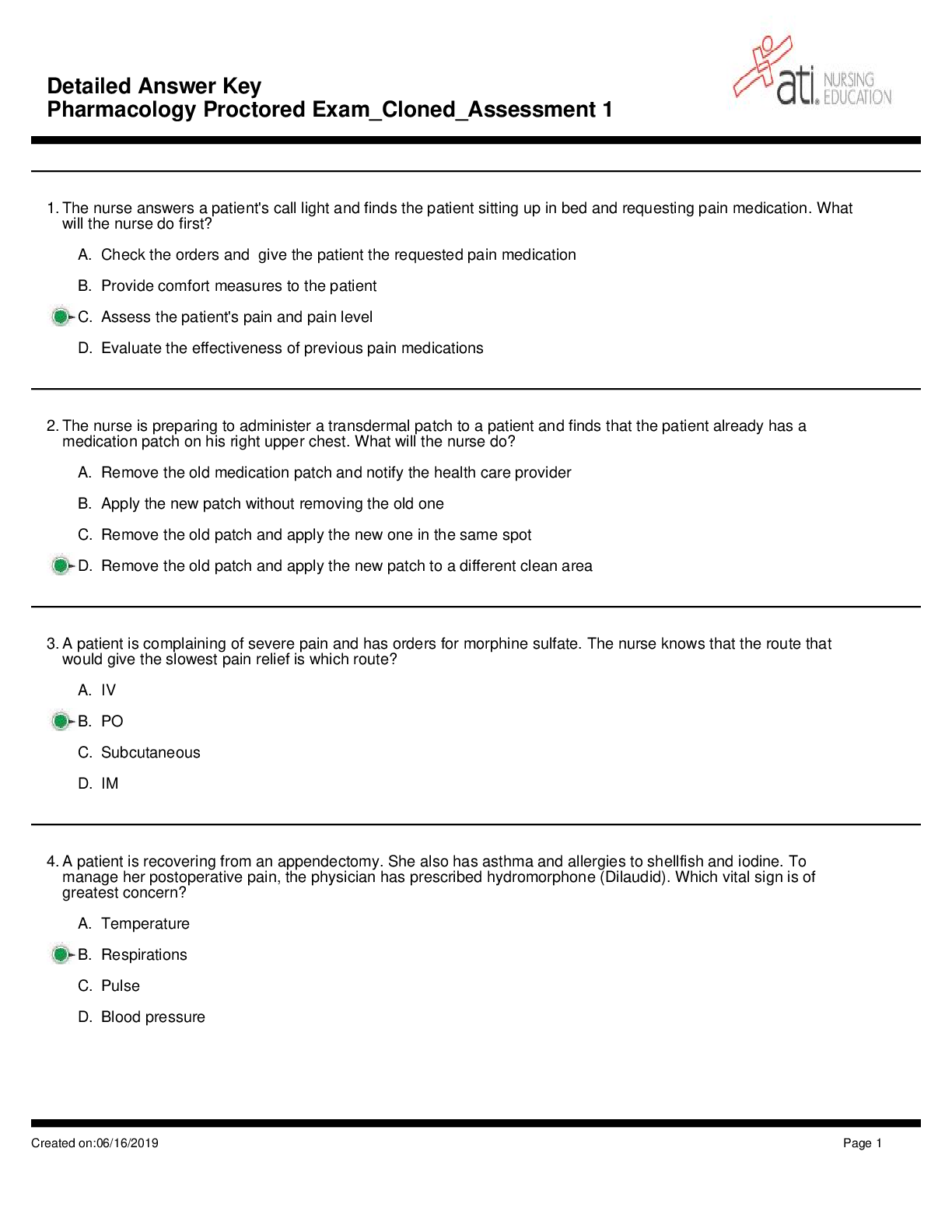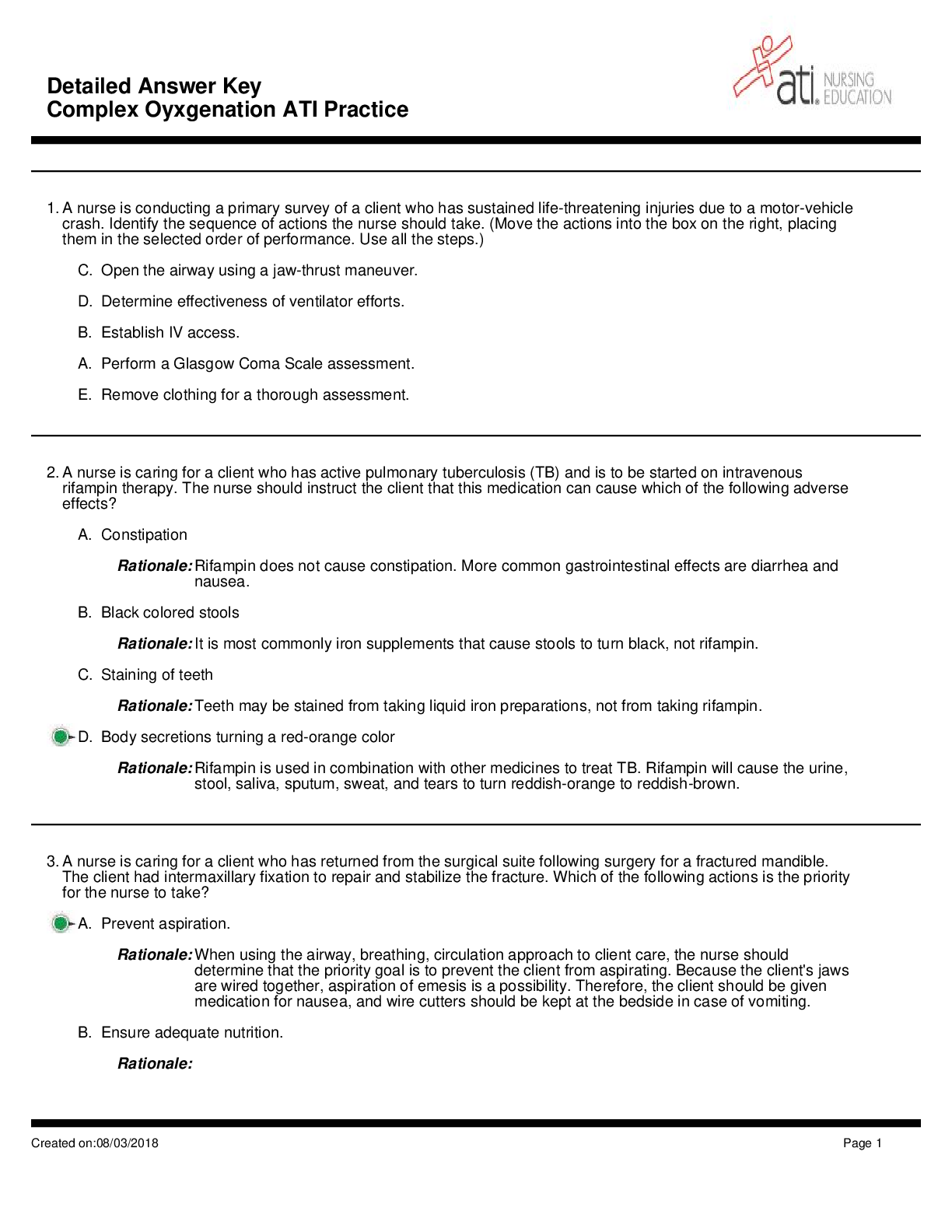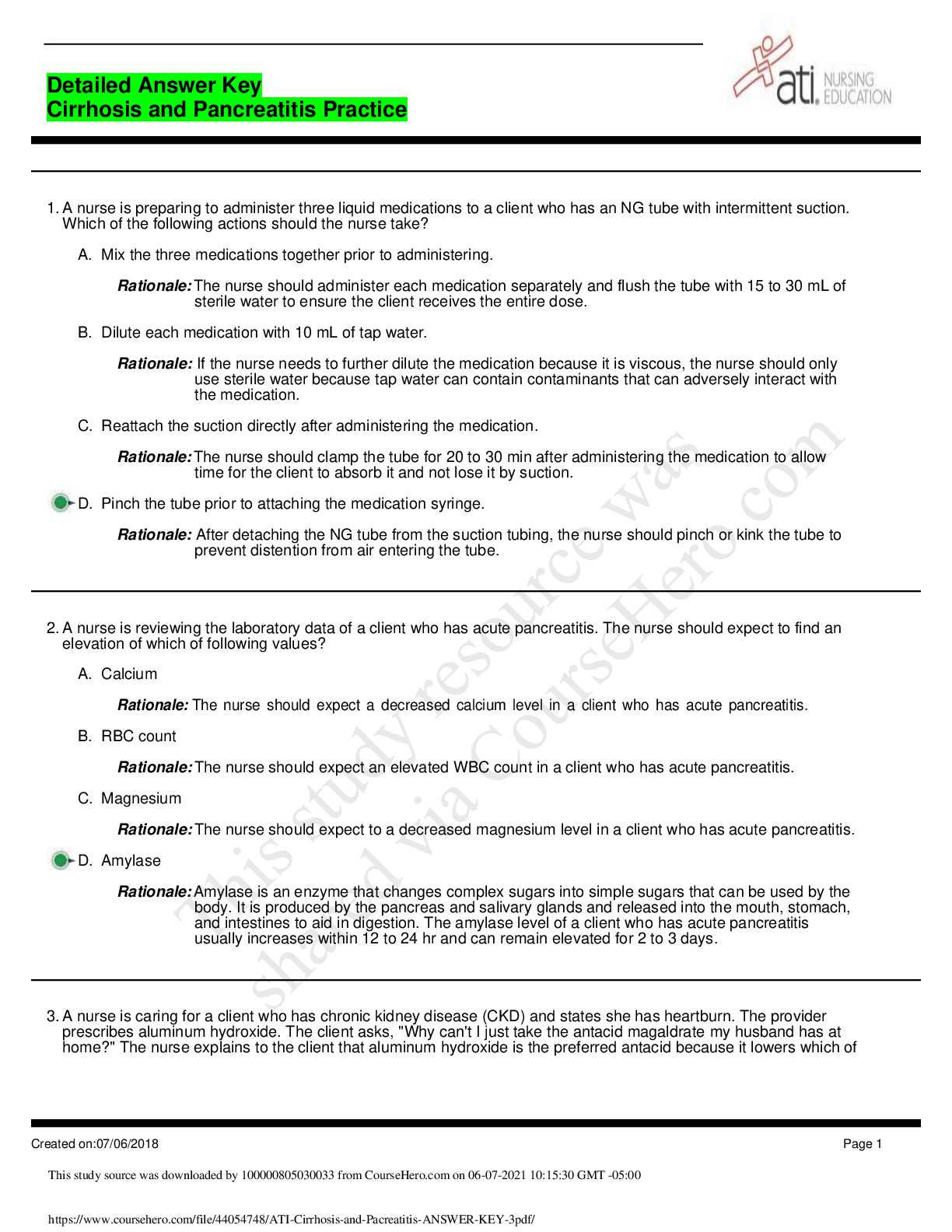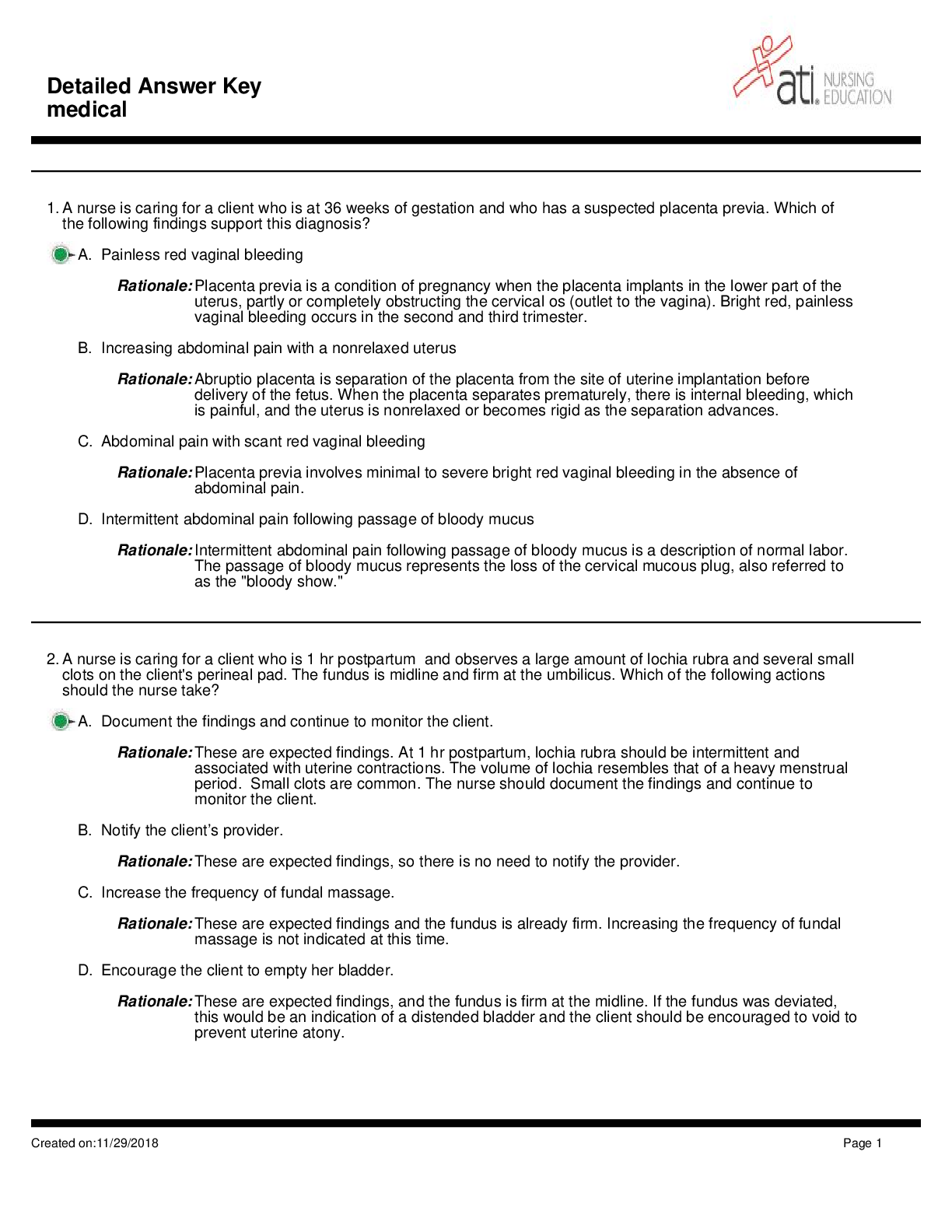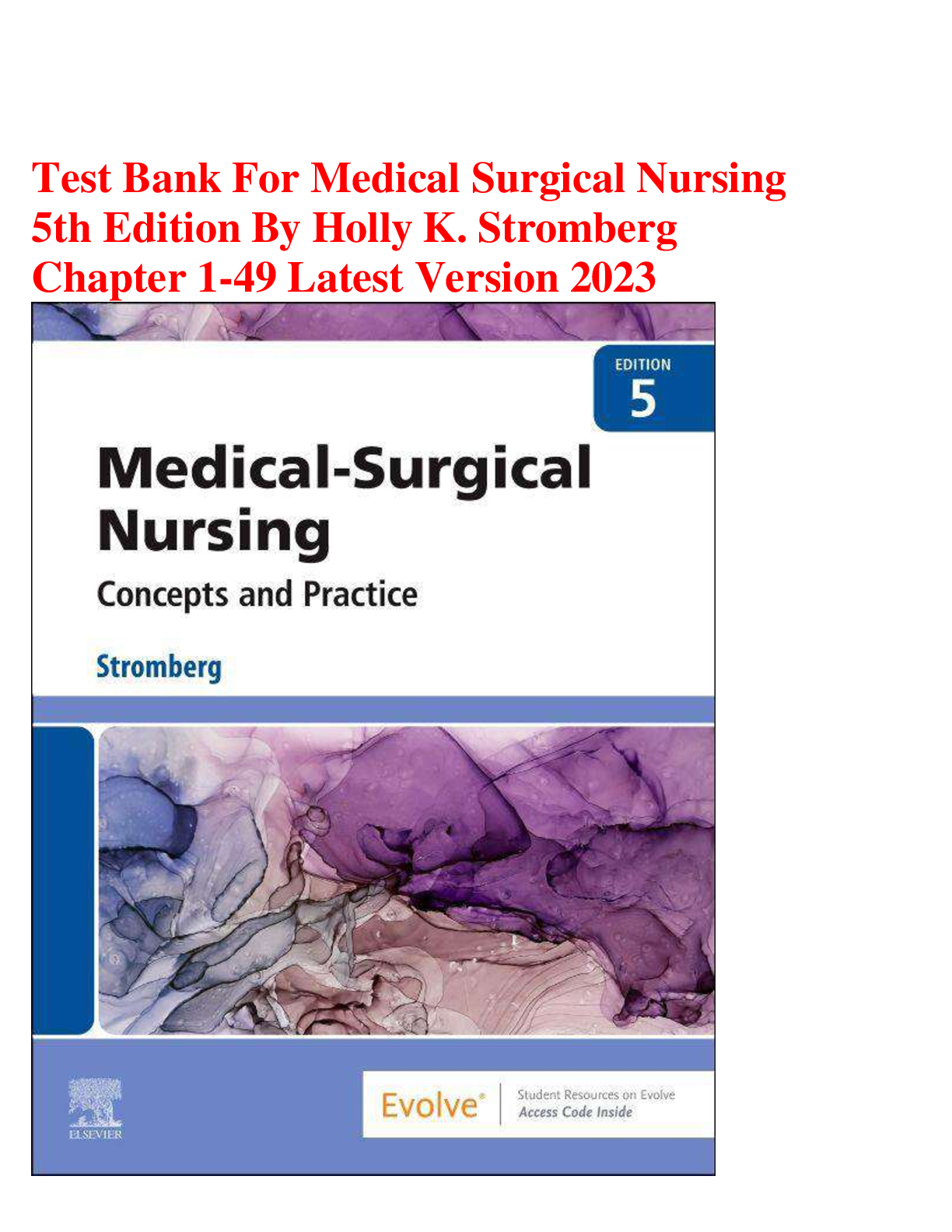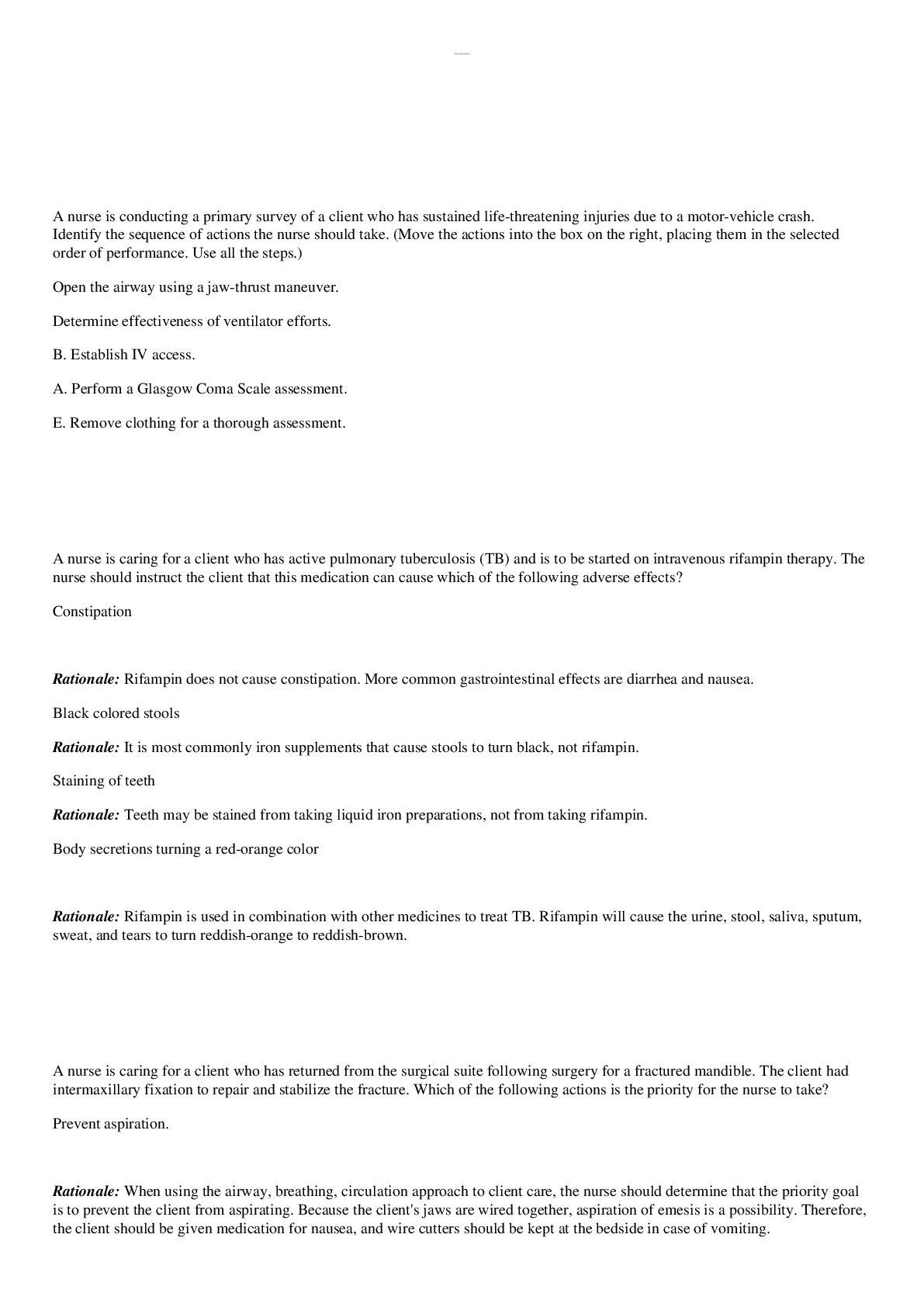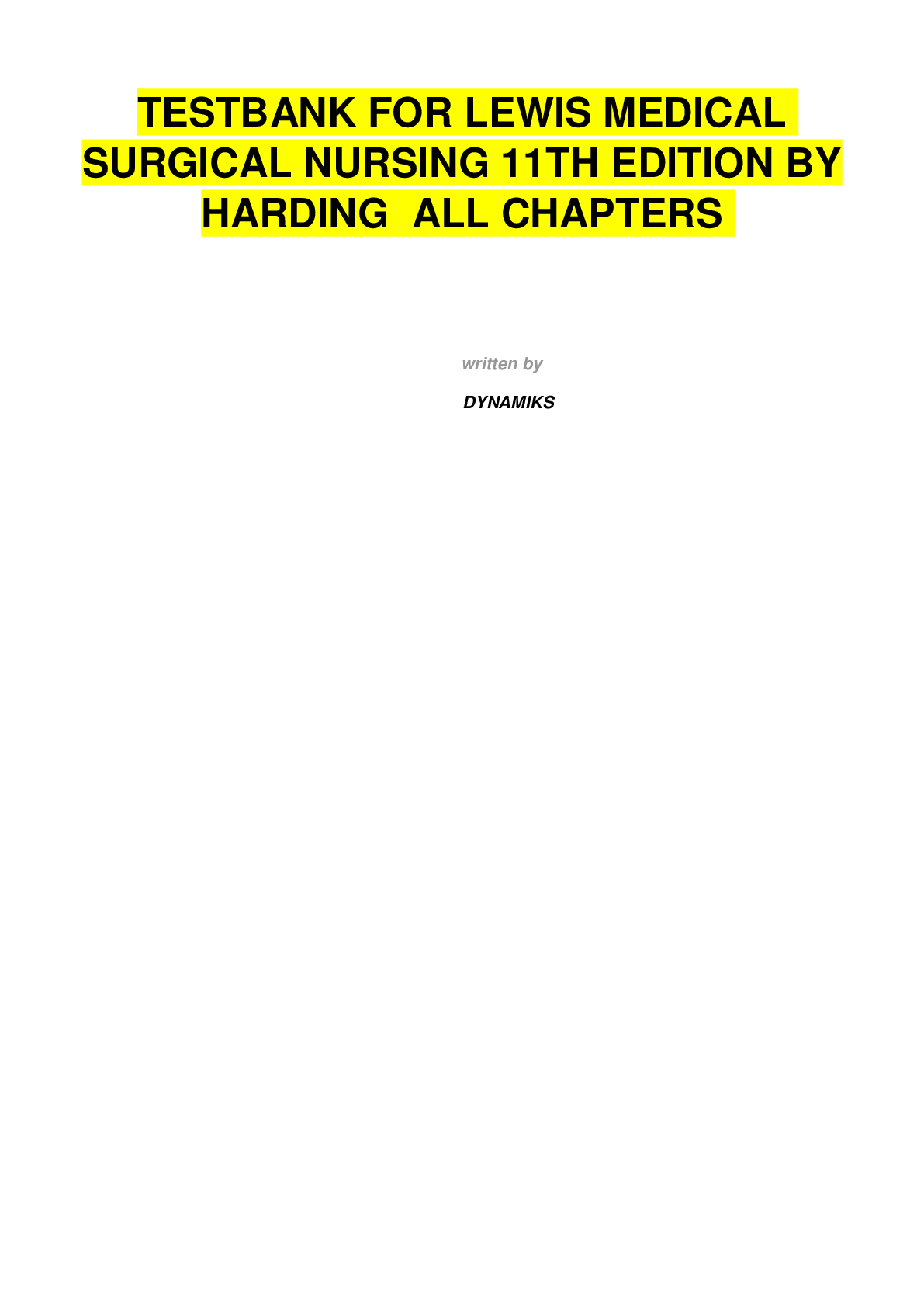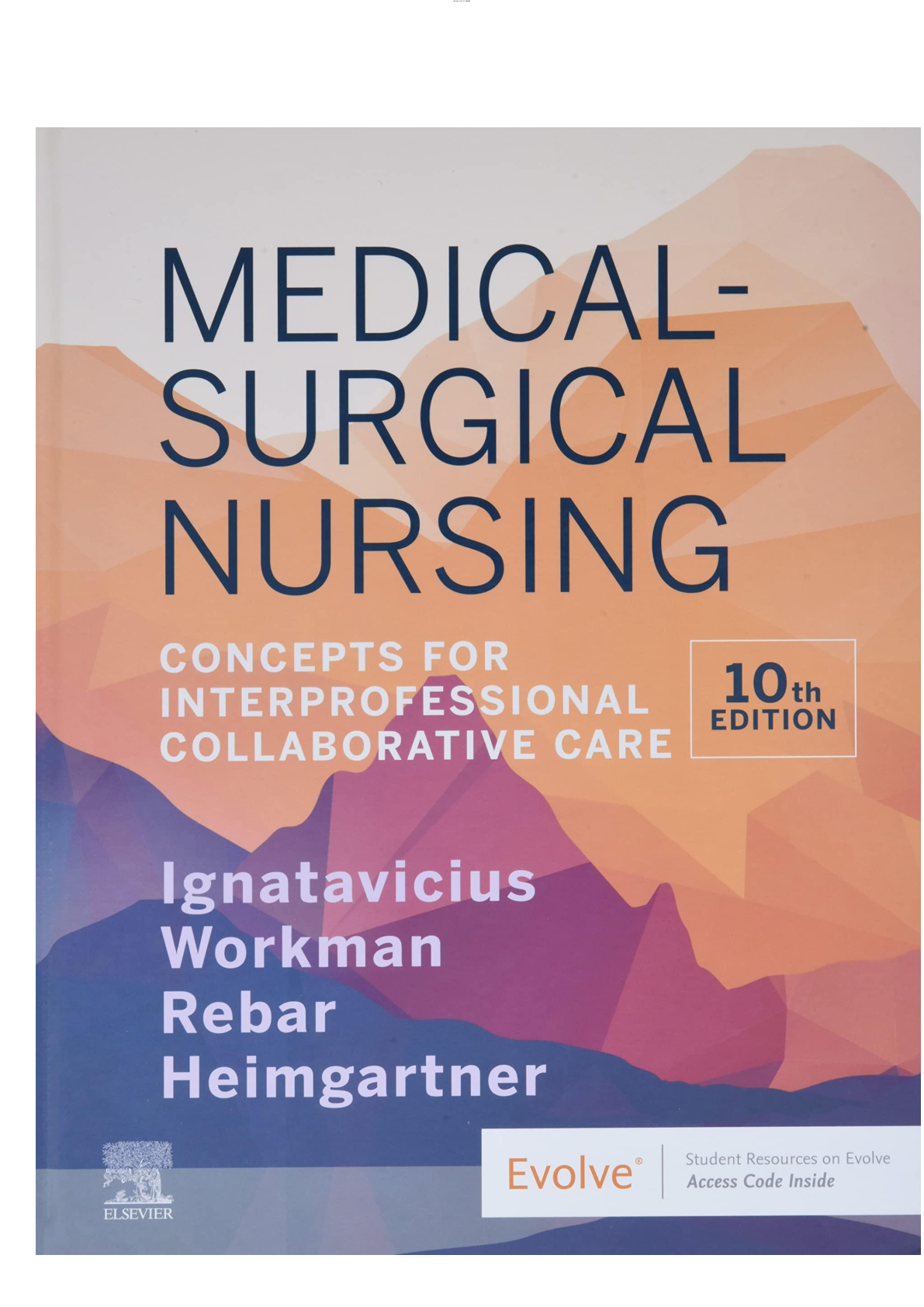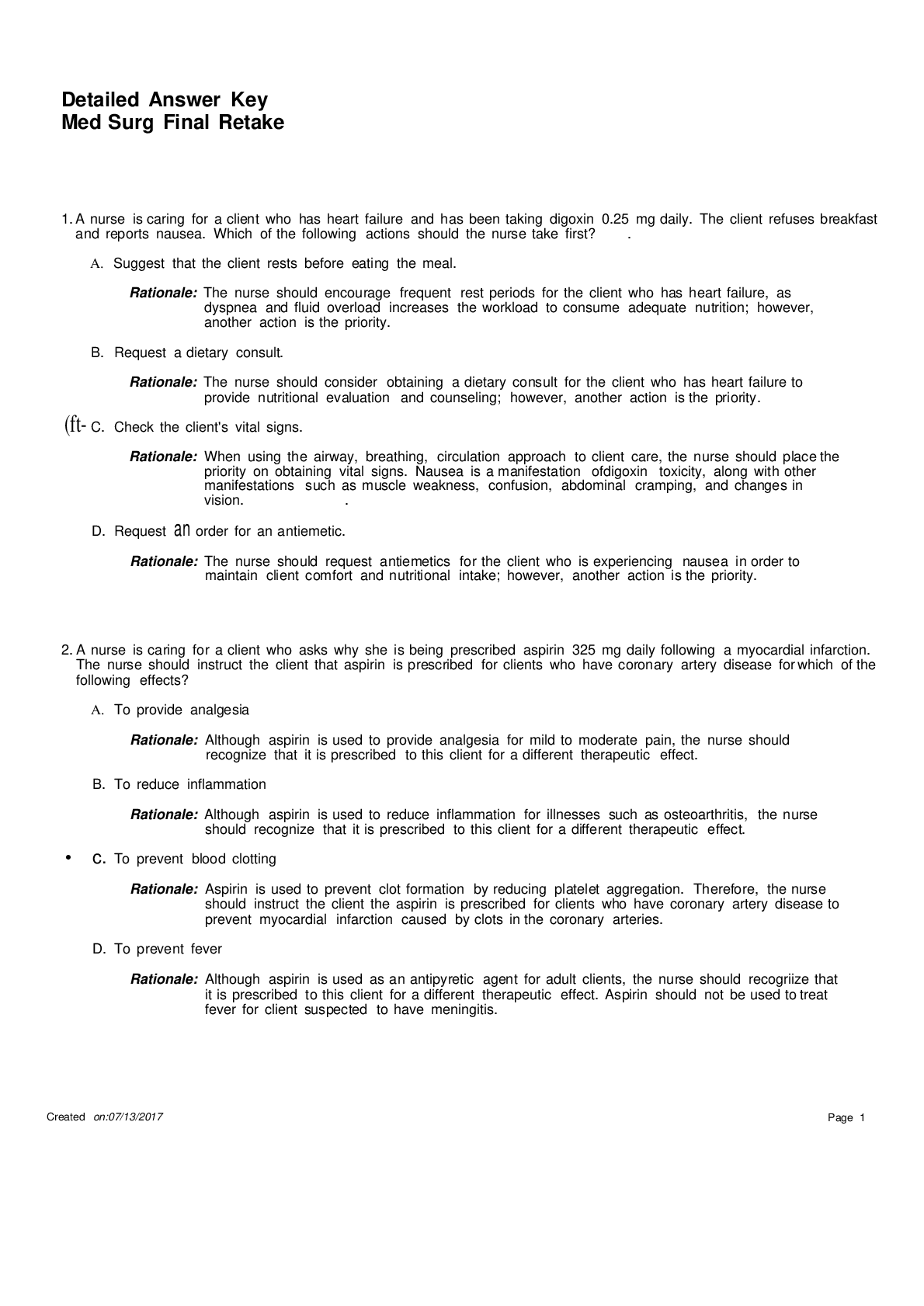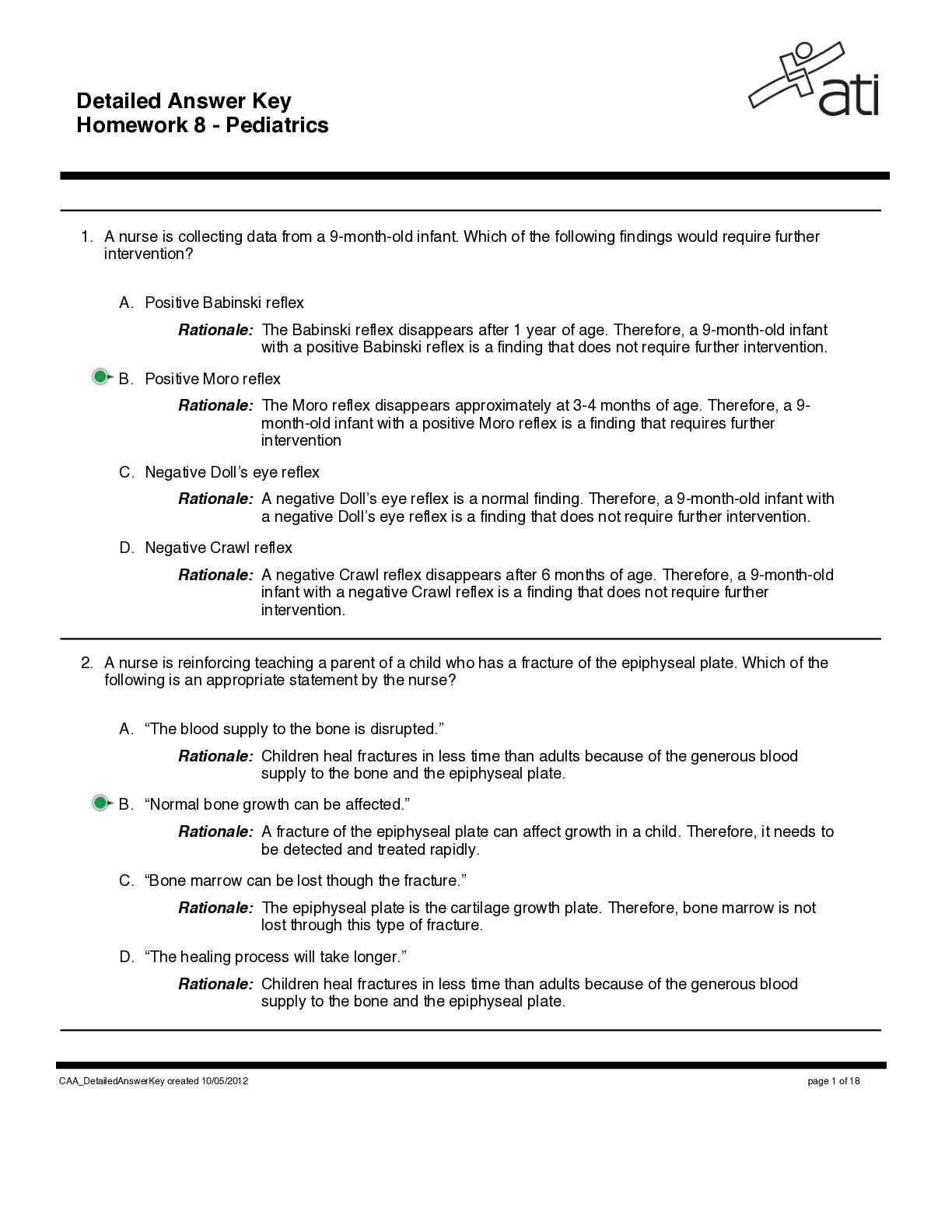*NURSING > ATI > ATI RN-Adult Medical Surgical Nursing Detailed Answer Key ATI Complex Endocrine Practice Latest-2022 (All)
ATI RN-Adult Medical Surgical Nursing Detailed Answer Key ATI Complex Endocrine Practice Latest-2022-2023
Document Content and Description Below
ATI RN-Adult Medical Surgical Nursing Detailed Answer Key ATI Complex Endocrine Practice Latest-2022-2023A nurse is caring for a client who is 1 day postoperative following a subtotal thyroidectomy. T... he client reports a tingling sensation in the hands, the soles of the feet, and around the lips. For which of the following findings should the nurse assess the client? A. Chvostek's sign Rationale: The nurse should suspect that the client has hypocalcemia, a possible complication following subtotal thyroidectomy. Manifestations of hypocalcemia include numbness and tingling in the hands, the soles of the feet, and around the lips, typically appearing between 24 and 48 hr after surgery. To elicit Chvostek's sign, the nurse should tap the client's face at a point just below and in front of the ear. A positive response would be twitching of the ipsilateral (same side only) facial muscles, suggesting neuromuscular excitability due to hypocalcemia. B. Babinski's sign Rationale: Babinski's sign is a diagnostic test for brain damage or upper motor neuron damage. It is positive if the toes flare up when the nurse strokes the plantar aspect of the foot. C. Brudzinski's sign Rationale: Brudzinski's sign is an indication of meningeal irritation, such as in clients who have meningitis. With the client supine, the nurse should place one hand behind his head and places her other hand on his chest. The nurse then raises the client's head with her hand behind his head, while the hand on his chest restrains him and prevents him from rising. Flexion of the client's lower extremities constitutes a positive sign. D. Kernig's sign Rationale: Kernig's sign is an indication of meningeal irritation, such as in clients who have meningitis. The nurse performs the maneuver with the client supine with his hips and knees in flexion. The inability to extend the client's knees fully without causing pain constitutes a positive test. 2. A nurse is caring for an adolescent client who has a long history of diabetes mellitus and is being admitted to the emergency department confused, flushed, and with an acetone odor on the breath. Diabetic ketoacidosis is suspected. The nurse should anticipate using which of the following types of insulin to treat this client? A. NPH insulin Rationale: Isophane NPH insulin is intermediate-acting. It has an onset of action of 1 to 3 hr and is not appropriate for emergency treatment of ketoacidosis. B. Insulin glargine Rationale: Insulin glargine is a long-acting insulin, with an onset of 2 to 4 hr. It is not appropriate for emergency treatment of ketoacidosis. C. Insulin detemir Rationale: Insulin detemir is an intermediate-acting insulin. It has an onset of action of 1 hr and is not appropriate for emergency treatment of ketoacidosis. D. Regular insulin Rationale: Detailed Answer Key ATI Complex Endocrine Practice Created on:08/13/2022 Page 2 Regular insulin is classified as a short-acting insulin. It can be given intravenously with an onset of action of less than 30 min. This is the insulin that is most appropriate in emergency situations of severe hyperglycemia or diabetic ketoacidosis. 3. A nurse is assessing a client who has diabetes insipidus. Which of the following findings should the nurse expect? A. Dehydration Rationale: Diabetes insipidus causes excessive excretion of dilute urine, resulting in dehydration. B. Polyphagia Rationale: Polyphagia is a finding of diabetes mellitus, not insipidus. C. Hyperglycemia Rationale: Hyperglycemia is a finding of diabetes mellitus, not diabetes insipidus. D. Bradycardia Rationale: Tachycardia, not bradycardia, is a manifestation of diabetes insipidus. 4. A nurse is caring for a client who has diabetes insipidus and is receiving vasopressin. The nurse should identify which of the following findings as an indication that the medication is effective? A. A decrease in blood sugar Rationale: Blood sugar level is not affected in diabetes insipidus. B. A decrease in blood pressure Rationale: Diabetes insipidus causes the loss of large amounts of urine, which can lead to hypotension. An increase (or at least no further decrease) in blood pressure would be the desired response to vasopressin. C. A decrease in urine output Rationale: The major manifestations of diabetes insipidus are excessive urination and extreme thirst. Vasopressin is used to control frequent urination, increased thirst, and loss of water associated with diabetes insipidus. A decreased urine output is the desired response. D. A decrease in specific gravity Rationale: An increase in specific gravity (indicating a more concentrated urine) would be the desired response of vasopressin. 5. A nurse is reviewing the arterial blood gas (ABG) results of a client who the provider suspects has metabolic acidosis. Which of the following results should the nurse expect to see?#New #Pathophysiology #Advanced #Chamberlain #Latest #Nursing #Aplus #Grade #results #allcorrect #midterms #finals #keiser #Ihuman #BIOD 152 #Anatomy #Physiology # Portage #NR602 [Show More]
Last updated: 1 year ago
Preview 1 out of 12 pages
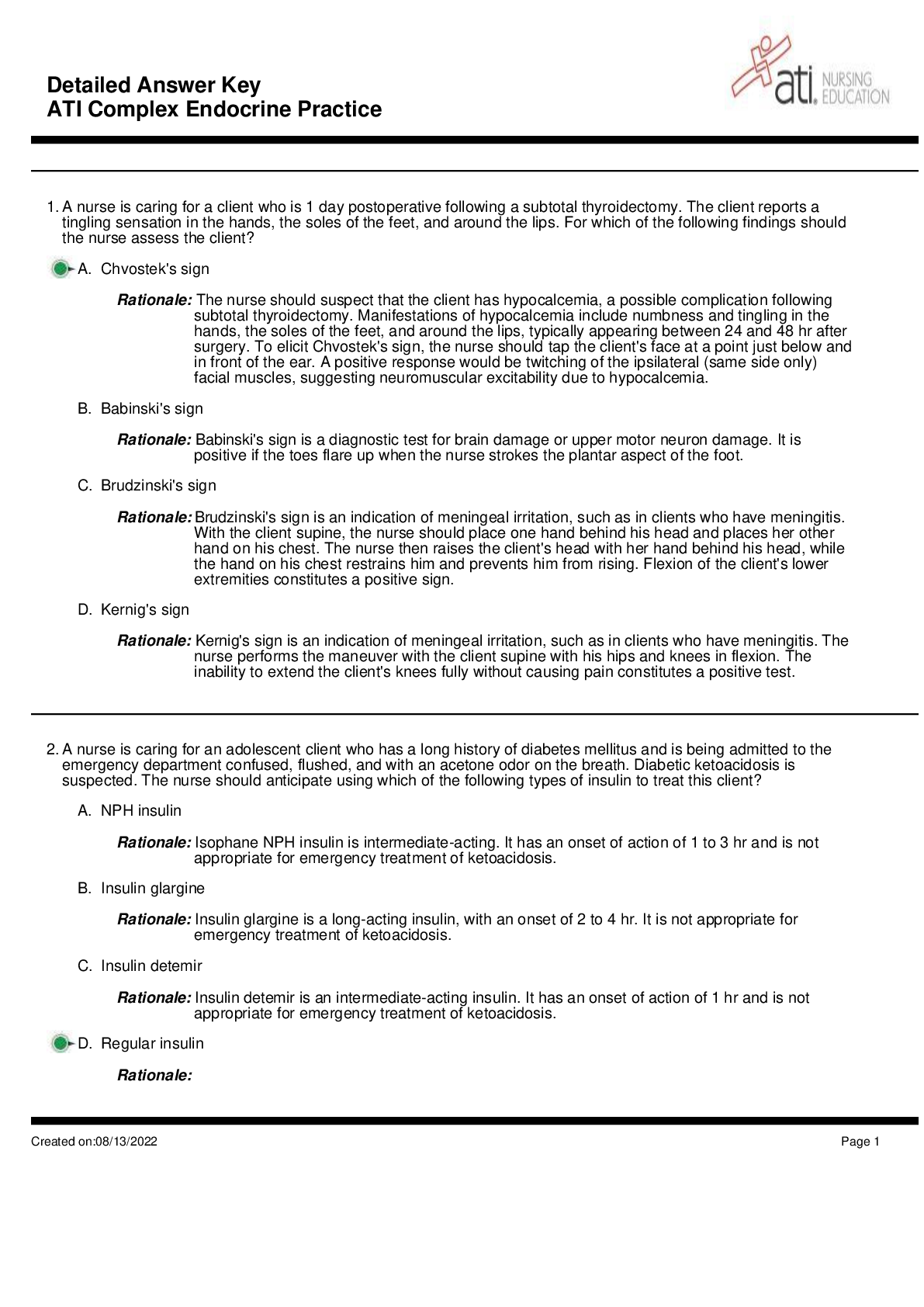
Reviews( 0 )
Document information
Connected school, study & course
About the document
Uploaded On
Mar 01, 2023
Number of pages
12
Written in
Additional information
This document has been written for:
Uploaded
Mar 01, 2023
Downloads
0
Views
58

